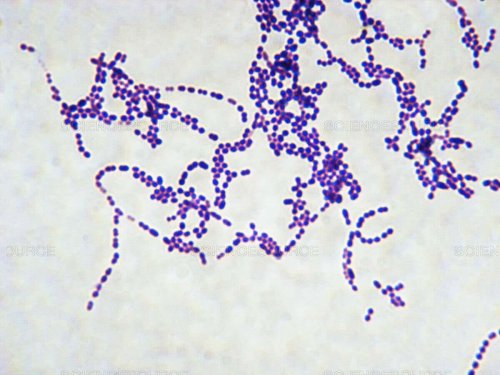Cellulitis in Children: What You Should Know

Cellulitis in children is defined as severe inflammation of the dermis and the subcutaneous cellular tissue after an injury (burn, cut, insect bite, surgical wound, etc.) becomes infected. The infection may occur due to common skin bacterial flora or exogenous bacteria.
Generally, cellulitis usually manifests on the skin of the face and lower extremities. However, it can occur anywhere on the body. As the infection progresses, the patient may suffer from erythema multiforme (EM), circumscribed pain, and increased skin temperature in the affected area.
Causes of cellulitis in children
It’s known that cellulitis in children can manifest due to a skin lesion or an insect bite. The causative agents of the infection are Streptococcus pyogenes and Staphylococcus aureus in immunocompetent patients. However, in some cases, it can be caused by other bacteria such as Haemophilus influenzae type B.

The infection usually manifests as facial, periorbital, perianal, and orbital cellulitis. Any of them can have complications and, therefore, are considered serious.
Types of cellulitis in children
Cellulitis makes the skin look swollen and red. In addition, the child may suffer from pain or tenderness. Now, to determine the type of infection, you should take your child to the doctor immediately for a physical assessment of the affected area and a subsequent diagnosis.
Facial cellulitis
The bacteria H. influenzae type B causes facial cellulitis. This type is less common because there’s a vaccine for it. It mainly occurs in children between the ages of three months to five years and, in most cases, it unilaterally affects the cheeks.
The most common symptoms are:
- Swelling and redness of the face. Although it primarily affects the cheeks, it may also extend to the eyelids.
- Sensitivity in the infected area.
- Bluish or purplish red coloration.
- Other less common symptoms such as vomiting, muscle aches, or fever.
Periorbital or preseptal cellulitis
This is a type of cellulitis that affects the soft tissue surrounding the eyeballs and also involves the eyelids. The infection may compromise the socket, lacrimal apparatus, and sinuses. It’s more common in children under the age of five.
Factors that may lead to it include trauma, bites, wounds, skin infection, herpes superinfection, or sinusitis.
Symptoms include:
- Fever.
- Irritability.
- Upper respiratory tract infection.
- Swelling and redness of the upper and lower eyelids.
- In some cases, the patient may suffer from painful eye movement, blurred vision, and swelling.
Orbital cellulitis
This type of cellulitis can compromise the eye and the eye structures within the bone cavity of the face. It occurs mainly in children older than five and may manifest due to ethmoid sinusitis or orbital septum trauma.
These are some of the symptoms:
- Pain.
- Erythema.
- Eyelid swelling.
- Bloodshot eyes.
- Proptosis or bulging of the eye.
- Decreased ocular motility.
Perianal streptococcal cellulitis

This is an infection of the anus and rectum caused primarily by Streptococcus bacteria. It manifests during or after strep throat, nasopharyngitis, or streptococcal skin infection (impetigo).
Its symptoms include:
- Fever.
- Itching, pain, or bleeding.
- Redness around the anus.
Diagnosis of cellulitis in children
The doctor will perform a physical exam to analyze the redness, temperature, and swelling of the child’s skin. After the physical exam, the doctor may request a blood culture, a complete blood count, and a culture of any liquid or material within the affected area.
On the other hand, they may request the child’s health history and analyze the size of the infection to see if it spreads later on. Once the doctor gets all the test results, they’ll determine the course of treatment.
Treatment of cellulitis in children

When the doctor determines the type of cellulitis the child is suffering from, they’ll prescribe an antibiotic treatment the child must follow to the letter. Otherwise, the infection could return.
Recommendations
- You shouldn’t stop your child’s antibiotic treatment unless their pediatrician instructs you to. If your child has a fever, you should consult your doctor directly about the drug you should give them. Acetaminophen or paracetamol is generally recommended.
- Apply cold compresses to the affected area.
- During bath time, gently wash the area with antibacterial soap and water.
- It’s important to keep your child hydrated. However, avoid giving your child drinks that contain caffeine.
- To relieve the affected area, you can apply an antibiotic cream, which must be prescribed by your child’s pediatrician.
Cellulitis in children can cause various complications if not treated early. Therefore, we recommend consulting your pediatrician at the onset of any symptom. On the other hand, you should carefully tend to your child’s wounds and insect bites.
Cellulitis in children is defined as severe inflammation of the dermis and the subcutaneous cellular tissue after an injury (burn, cut, insect bite, surgical wound, etc.) becomes infected. The infection may occur due to common skin bacterial flora or exogenous bacteria.
Generally, cellulitis usually manifests on the skin of the face and lower extremities. However, it can occur anywhere on the body. As the infection progresses, the patient may suffer from erythema multiforme (EM), circumscribed pain, and increased skin temperature in the affected area.
Causes of cellulitis in children
It’s known that cellulitis in children can manifest due to a skin lesion or an insect bite. The causative agents of the infection are Streptococcus pyogenes and Staphylococcus aureus in immunocompetent patients. However, in some cases, it can be caused by other bacteria such as Haemophilus influenzae type B.

The infection usually manifests as facial, periorbital, perianal, and orbital cellulitis. Any of them can have complications and, therefore, are considered serious.
Types of cellulitis in children
Cellulitis makes the skin look swollen and red. In addition, the child may suffer from pain or tenderness. Now, to determine the type of infection, you should take your child to the doctor immediately for a physical assessment of the affected area and a subsequent diagnosis.
Facial cellulitis
The bacteria H. influenzae type B causes facial cellulitis. This type is less common because there’s a vaccine for it. It mainly occurs in children between the ages of three months to five years and, in most cases, it unilaterally affects the cheeks.
The most common symptoms are:
- Swelling and redness of the face. Although it primarily affects the cheeks, it may also extend to the eyelids.
- Sensitivity in the infected area.
- Bluish or purplish red coloration.
- Other less common symptoms such as vomiting, muscle aches, or fever.
Periorbital or preseptal cellulitis
This is a type of cellulitis that affects the soft tissue surrounding the eyeballs and also involves the eyelids. The infection may compromise the socket, lacrimal apparatus, and sinuses. It’s more common in children under the age of five.
Factors that may lead to it include trauma, bites, wounds, skin infection, herpes superinfection, or sinusitis.
Symptoms include:
- Fever.
- Irritability.
- Upper respiratory tract infection.
- Swelling and redness of the upper and lower eyelids.
- In some cases, the patient may suffer from painful eye movement, blurred vision, and swelling.
Orbital cellulitis
This type of cellulitis can compromise the eye and the eye structures within the bone cavity of the face. It occurs mainly in children older than five and may manifest due to ethmoid sinusitis or orbital septum trauma.
These are some of the symptoms:
- Pain.
- Erythema.
- Eyelid swelling.
- Bloodshot eyes.
- Proptosis or bulging of the eye.
- Decreased ocular motility.
Perianal streptococcal cellulitis

This is an infection of the anus and rectum caused primarily by Streptococcus bacteria. It manifests during or after strep throat, nasopharyngitis, or streptococcal skin infection (impetigo).
Its symptoms include:
- Fever.
- Itching, pain, or bleeding.
- Redness around the anus.
Diagnosis of cellulitis in children
The doctor will perform a physical exam to analyze the redness, temperature, and swelling of the child’s skin. After the physical exam, the doctor may request a blood culture, a complete blood count, and a culture of any liquid or material within the affected area.
On the other hand, they may request the child’s health history and analyze the size of the infection to see if it spreads later on. Once the doctor gets all the test results, they’ll determine the course of treatment.
Treatment of cellulitis in children

When the doctor determines the type of cellulitis the child is suffering from, they’ll prescribe an antibiotic treatment the child must follow to the letter. Otherwise, the infection could return.
Recommendations
- You shouldn’t stop your child’s antibiotic treatment unless their pediatrician instructs you to. If your child has a fever, you should consult your doctor directly about the drug you should give them. Acetaminophen or paracetamol is generally recommended.
- Apply cold compresses to the affected area.
- During bath time, gently wash the area with antibacterial soap and water.
- It’s important to keep your child hydrated. However, avoid giving your child drinks that contain caffeine.
- To relieve the affected area, you can apply an antibiotic cream, which must be prescribed by your child’s pediatrician.
Cellulitis in children can cause various complications if not treated early. Therefore, we recommend consulting your pediatrician at the onset of any symptom. On the other hand, you should carefully tend to your child’s wounds and insect bites.
All cited sources were thoroughly reviewed by our team to ensure their quality, reliability, currency, and validity. The bibliography of this article was considered reliable and of academic or scientific accuracy.
- Acosta Gualandri, A. (2010). Celulitis en niños: una perspectiva clínica. http://hdl.handle.net/20.500.11764/366.
- Sánchez-Saldaña, L., & Anco-Gallegos, K. (2016). Celulitis y erisipela. Dermatología peruana, 26(1), 12.
- Gimeno I, et al. Celulitis preseptal y orbitaria. Anales de Pediatria Continuada 2014;12(6):284-288.
This text is provided for informational purposes only and does not replace consultation with a professional. If in doubt, consult your specialist.








